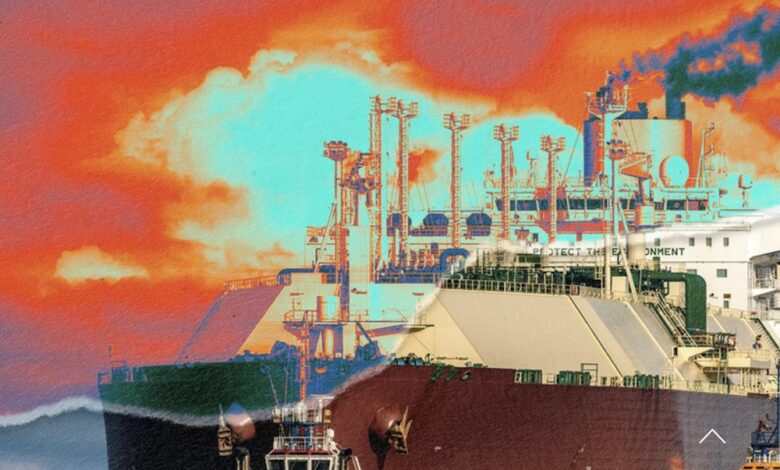Say No To LNG shipping campaign launches

Say No To LNG, a global shipping campaign, has launched this month, with its backers saying they aim to debunk the “myth” that LNG is a climate friendly marine fuel alternative.
LNG remains the number one alternative fuel chosen by owners when ordering newbuilds, with the number of LNG-fuelled ships soaring in recent years. Detractors of the fuel have also grown in number and volume with the likes of the World Bank weighing in.
The new campaign group is supported by ClimateWorks Foundation, a global platform for philanthropy to innovate and accelerate climate solutions that scale.
Say No To LNG’s one goal, according to its website, is to urge policymakers, industry stakeholders, and financial institutions to urgently rule LNG out of any shipping decarbonisation scenario, to ensure the fuel is seen as a “dead-end solution”.
Advocates of LNG as a marine fuel tout the benefits of LNG in considerably reducing sulphur and particulate pollution and cutting CO2 emissions during fuel combustion, hence argue that LNG is the only transition fuel available at scale today for reducing shipping CO2 emissions.
However, a growing body of literature shows that upstream methane leakage and high methane slip of some LNG-powered engines more than offset the CO2 emission benefits of LNG.
Methane emissions are responsible for 25% of global warming and pack a stronger short-term punch than CO2, with the campaign group claiming methane is 82 times more potent than CO2.
A report issued by London’s UCL Energy Institute last September argued that as much as $850bn of tonnage is at risk of being stranded by 2030 if the shipping sector continues investing in LNG-capable ships as policies that incentivise shipping to decarbonise in line with the Paris Agreement would erode the value of more expensive LNG-capable vessels to be similar to that of lower cost conventional vessels.
The World Bank shocked many in shipping two years ago with the publication of a maritime decarbonisation report in which it specifically recommended countries pull back from investing in further LNG bunkering infrastructure.
Similarly, the Intergovernmental Panel on Climate Change (IPCC) has been highlighting of late in far greater detail the harmful effects methane is having on the planet.
Faced with repeated criticism, SEA-LNG, shipping’s lobby group in favour of the chilled gas as a transitional fuel, stated in a recent release: “Waiting is not an option – LNG as a marine fuel delivers immediate GHG benefits and a lower risk, lower cost, and has an incremental pathway to zero emissions through bioLNG in the near term and e-LNG in the mid to long term.”

It’s not uncommon for those initiatives to state what they are opposing. What they all have in common is the lack of a realistically achievable solution. If we could reach an immediate decarbonization by 25%, why not take it? What we are achieving in other sectors is so much less, yet people seem to be happy. As a matter of fact, the so much praised wind farm has to produce energy for years to reach carbon neutrality. A battery powered car doesn’t even live long enough to recharge that status, ever.
We have to stop dreaming and start the transition process. LNG is the pathway E-fuels in the maritime industry. LNG vessels will be able to burn other fuels as well. If we are so concerned with CO2 emissions, we have to capture them right at the source.
What is hurting humans right now, are NOX, SOX and Particulate Matter, which are significantly reduced. Perhaps, this is too complicated for most people to understand. We should focus on that issue.
Hi Thomas,
The point about how”A battery powered car doesn’t even live long enough to recharge that status, ever” is incorrect. The distance driven to offset emissions varies between car manufacturers, local electricity grid mixes, and so on, but is readily achievable in all but the most extreme coal-powered areas. (Check out the publications of Auke Hoekstra, at TU Eindhoven on this: https://research.tue.nl/en/persons/auke-e-hoekstra)
LNG simply cannot be a future option. Methane is already responsible for 30% (not 25 as stated here) of warming to date, and it is up to 86x more potent than CO2. Bearing in mind that methane slip in an ICE is a trivial contribution to the actual leakages, and deliberate venting of methane by the O&G industry, it’s just not something we can consider substantially ramping-up when we’re trying to reduce climate drivers.
NOx, SOx, and particulates are indeed more direct causes of harm for individuals, I’m totally with you there, but if you also look at the societal cost of the broader health & safety implications of fossil fuel combustion, in terms of droughts, floods, heatwaves, population migration, etc, it’s clear that we need to work a lot harder to change our trajectory. We can’t just keep everything else in place, and switch out what substances we burn.
A very strong argument to go nuclear?
Hi